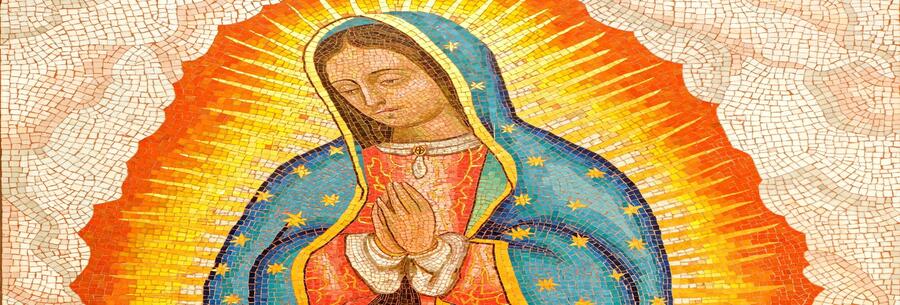Our Lady of Guadalupe is an emblematic figure of Catholicism, venerated in a special way in Mexico and throughout Latin America. Its history dates back to the early 16th century, when Spain was colonising Mexico.
The story of Our Lady of Guadalupe begins in December 1531, when the Virgin Mary is said to have appeared to a native named Juan Diego on the hill of Tepeyac, near Mexico City. Juan Diego was a convert to Christianity, and the Virgin Mary is said to have asked him to ask the local bishop, Fray Juan de Zumárraga, to build a church in her honour there.
Juan Diego was initially met with scepticism by the bishop, who demanded proof of the Virgin's visit. When Juan Diego met the Virgin again, she asked him to pick roses on the arid hill of Tepeyac, where normally nothing grew. Juan Diego found some roses, picked them from his cloak, called a "tilma", and brought them to the bishop.
When Juan Diego unfolded his cloak in front of the bishop to show the roses, a miraculous image of the Virgin Mary was revealed on the cloth. This image, now known as Our Lady of Guadalupe, has become a source of inspiration and devotion for millions of faithful.
The image of Our Lady of Guadalupe is rich in symbolism. It depicts the Virgin Mary in a posture that was understood by the indigenous peoples of the region as a pregnant woman. She is dressed in a turquoise blue cloak decorated with stars and suns, and is standing on a crescent moon. These elements have been interpreted as signs of a new era, integrating indigenous spirituality with Christian faith.
The Basilica of Our Lady of Guadalupe was built on the site requested by the Virgin Mary. Today it is one of the most visited Catholic shrines in the world. Every year, millions of pilgrims come to pay their respects, particularly on 12 December, the feast day of Our Lady of Guadalupe.
The image of Our Lady of Guadalupe has also played an important role in Mexican history. During the Mexican War of Independence in the early 19th century, the image of the Virgin of Guadalupe was adopted as a symbol by the insurgents, helping them to unite the different social and ethnic classes behind their cause.
Over the centuries, Our Lady of Guadalupe has become a central figure in popular piety, arousing devotion and admiration beyond the borders of Mexico. Her image is omnipresent in churches, homes and even on tattoos, testifying to her deep and lasting impact on the faith of believers. The Virgin of Guadalupe is recognised as the patron saint of Mexico and the whole of Latin America, and her presence continues to inspire generations of faithful around the world
.



















